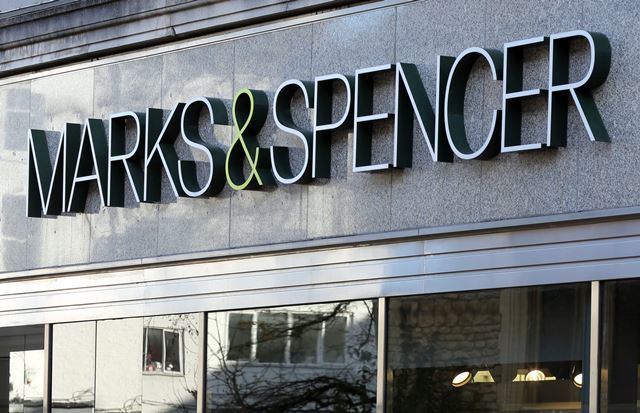
RETAIL giant Marks & Spencer has revealed a steeper drop in sales in its embattled clothing division after shunning discounts and seeing shopper demand hit by poor weather.
The high street chain said like-for-like sales in its general merchandise arm, which includes womenswear, fell 1.9% in its second quarter, following a 0.4% drop in the previous three months.
But its move not to join in widespread discounting on the high street helped boost underlying pre-tax profits by a better-than-expected 6.1% to £284 million in the six months to September 26. On a statutory basis, profits were 22.7% lower at £216 million.
M&S added that its new Sparks loyalty card had been “extremely successful”, with 1.8 million customers signing up since its launch two weeks ago.
The group was also helped by another decent performance in its food division, with like-for-like sales ahead by 0.2% in its second quarter, although this marked a slight drop on the 0.3% the previous three months.
Shares lifted 4% as the City cheered the group’s forecast-beating hike in half-year profits.
M&S boss Marc Bolland said the group delivered “good underlying profit growth” and insisted the chain’s decision not to run discounts was the right move, despite leading to a worsening sales performance in clothing, homewares and shoes.
The group said trading conditions on the high street were tough as firms slashed prices to shift stock after being hit by unseasonal conditions over the summer.
Mr Bolland said: “We took the decision to focus on profitability and full-price sales.”Click here to find out how much money was spent on Halloween in the UK this yearM&S has also been making efforts to cut sourcing costs in the general merchandise business, which is helping push up profits.
A robust hike in online sales also helped the group in its first half, with M&S.com seeing sales surge by 34.2%.
But this failed to offset a hefty slide in comparable sales in its UK stores, down by 5% to 6% in the half year, according to the group.
Total interim UK like-for-like sales were left 0.4% lower as a result, while international sales were hit by the strong pound, down 2.4% in the second quarter.
M&S cautioned that trading will remain difficult on the high street.
“Despite some improvement in consumer confidence, market conditions continue to be challenging in both the UK and the international markets,” it said.
Mr Bolland said M&S would take part in this year’s Black Friday discount shopping event, even though it was beset by problems last November with online delivery woes and delays in its new distribution centre.
The group has recently carried out stress tests to ensure its website and warehouse are ready for the November 27 shopping surge and peak Christmas trading.
M&S has seen clothing sales slip back into the red for two quarters in a row, having raised hopes of a turnaround earlier this year when it saw a surprise 0.7% quarterly rise in general merchandise sales.
The rise was only a temporary reprieve, coming after more than three years of falls.
However, its profits have turned the corner, with the half-year hike following on from its first rise in annual earnings for four years in May, which has eased some of the intense pressure Mr Bolland has been under in recent years.
Items such as a much-talked about 1970s-style suede skirt worn by TV presenter and model Alexa Chung have also helped improve the image of M&S’s clothing range.
Retail experts at Shore Capital said while the latest general merchandise sales fall was disappointing, M&S management are “running the business effectively given trading conditions”.
They added M&S also has a “cracking food operation where underlying performance is strong in a difficult UK market with sustained gains in market share”.

Enjoy the convenience of having The Sunday Post delivered as a digital ePaper straight to your smartphone, tablet or computer.
Subscribe for only £5.49 a month and enjoy all the benefits of the printed paper as a digital replica.
Subscribe